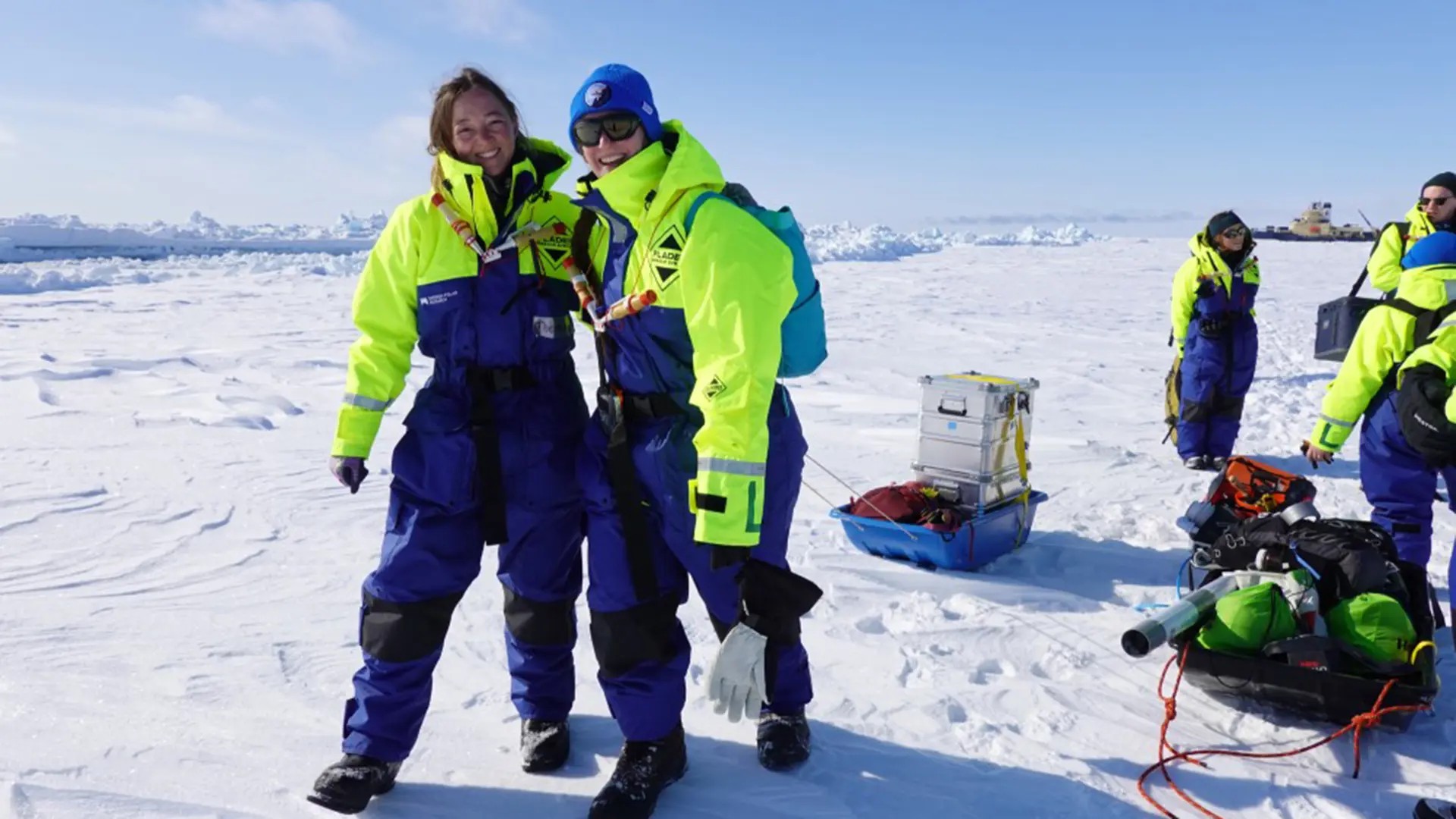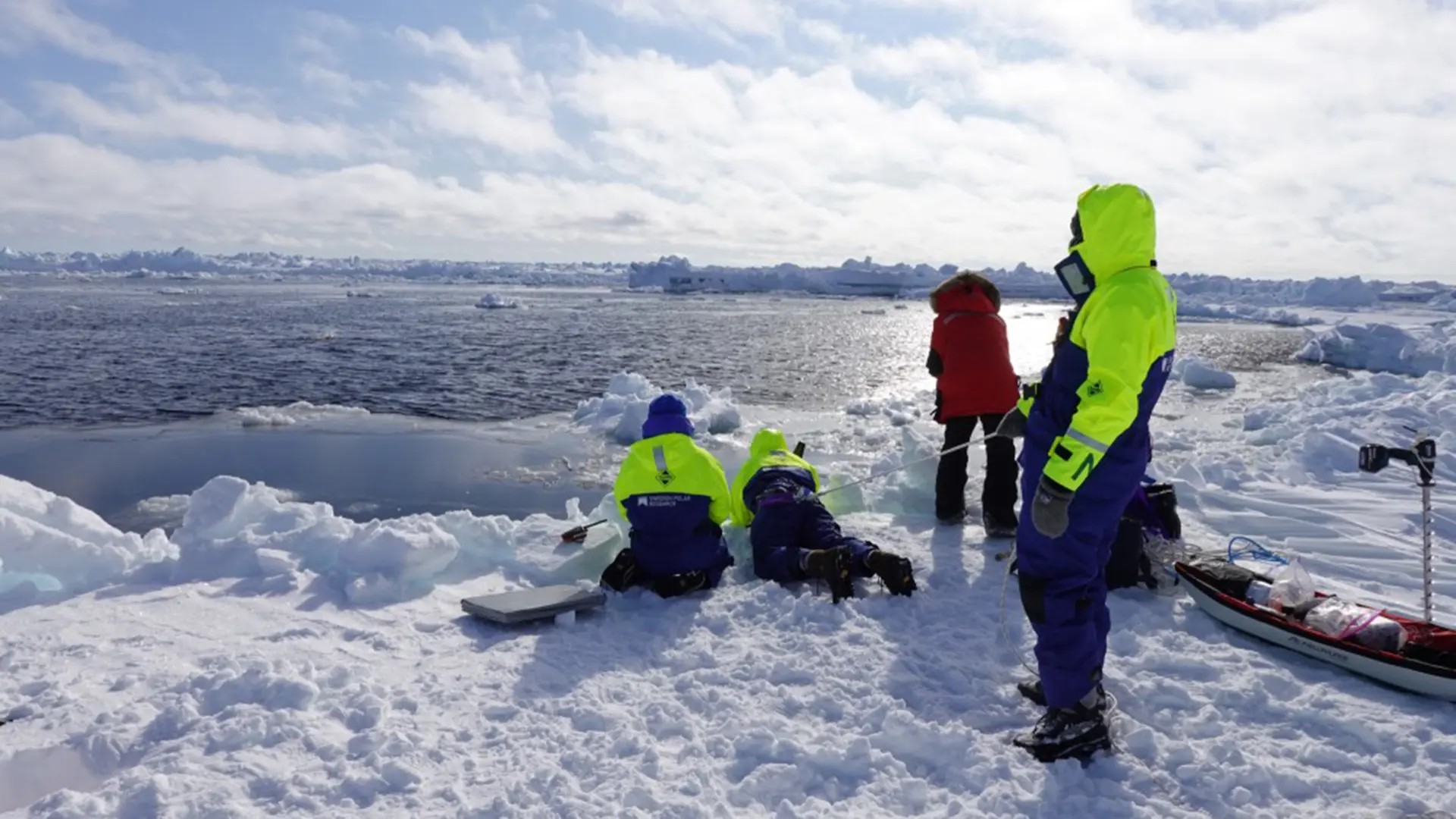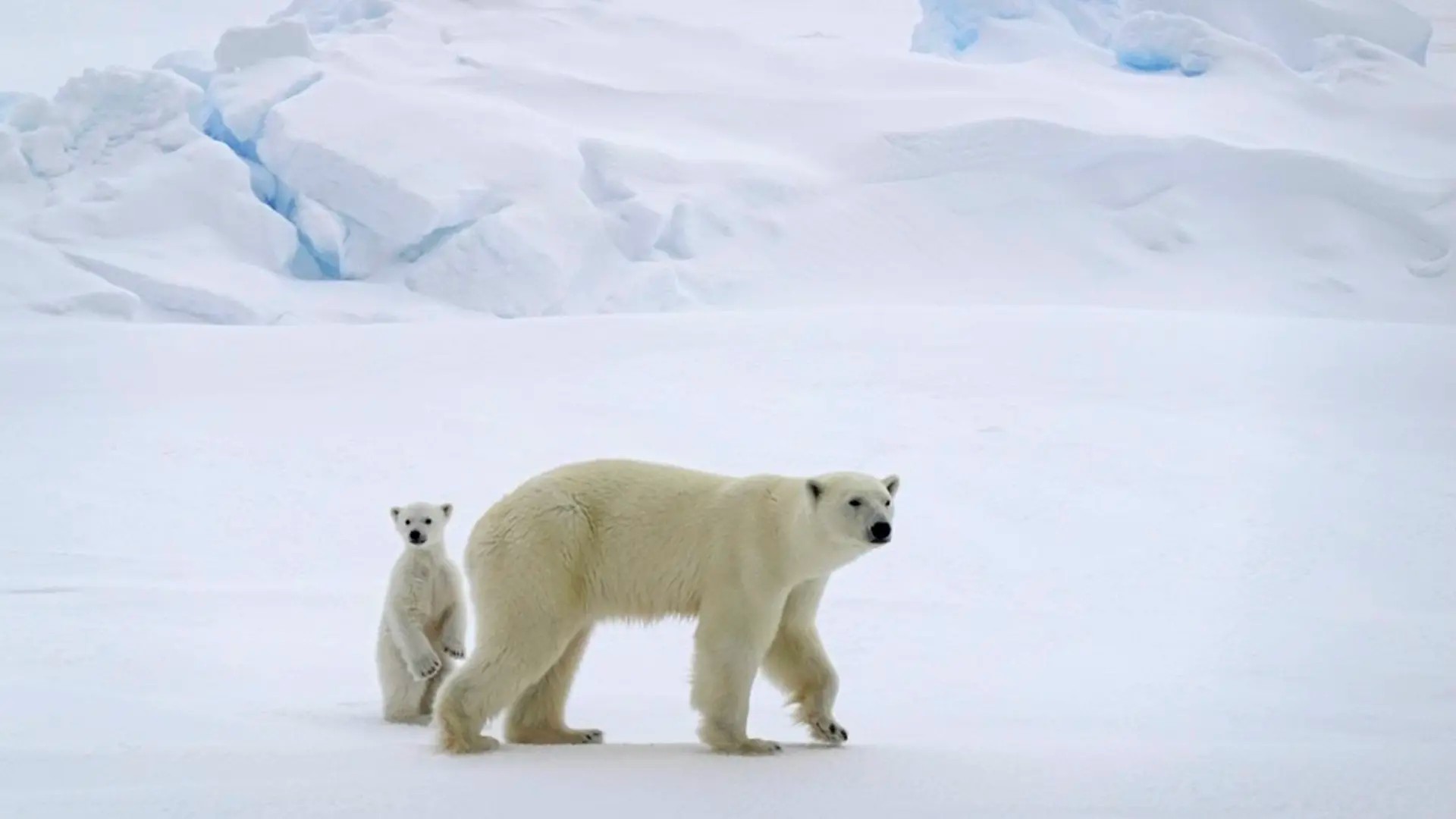The ongoing polar expedition Art of Melt includes Chalmers researchers Luisa Ickes and Denis Demchev. They travel on the icebreaker Oden for an expedition aiming to find out, among other things, when the Arctic ice begins to melt and which processes affect the melting.
With a few snapshots, Luisa describes the ongoing work on mapping the ice and its surroundings before the ice starts to melt:

The picture is from our first "ice station" where we stayed for a few days. Me and my colleague Stella Papadopoulou are on our way to a so-called Open Lead, an opening in the ice where we have taken samples of water, ice and snow to see what life forms are here before the melting process starts. Every day we have to unload and load all the instruments needed for the measurements off and on the ship, so it's a kind of high-intensity training – especially since we have 4-5 layers of clothes on against the cold.

Here we are at the opening in the ice. I'm the one lying on the ground taking samples of what we call the "surface organic microlayer" (SML), the organic layer that forms on the surface of seawater. It helps us see how much life and other organic material is already present in the water, before the melting starts.

A mother polar bear with cub came past the ship. Luckily it happened in the evening when everyone was on board the Oden, so it wasn't a dangerous situation. It was rather cool that we got to see such wild animals so close. But if a polar bear was nearby in the evening, we have to be extra careful the next day so that we don't run into a polar bear when we're out on the ice sheet. Female polar bears go into hibernation before giving birth to cubs and are therefore both quite thin and extra hungry at this time of year. The male polar bears we saw were much bigger!
Contact
- Associate Professor, Geoscience and Remote Sensing, Space, Earth and Environment
